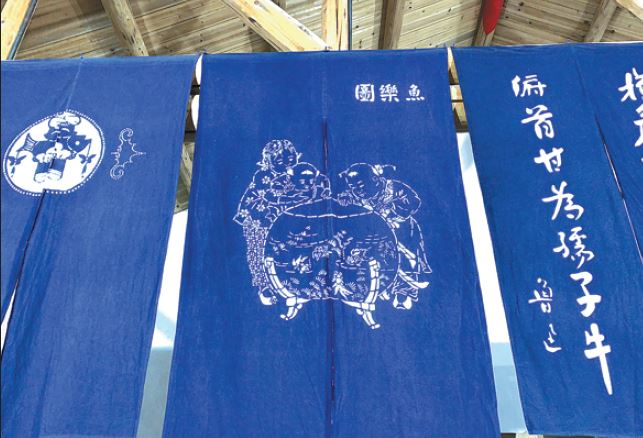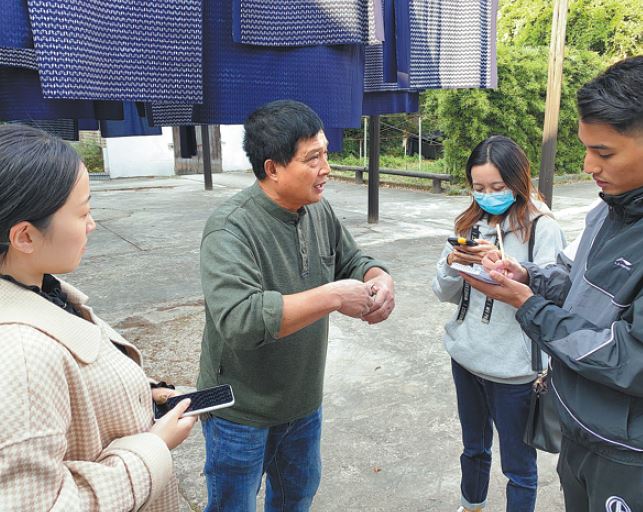Taking a step back in time to watch indigo masters ply their trade

The indigo linen art is seen as intangible cultural heritage. MIGUEL VILLANUEVA/FOR CHINA DAILY
Zhou Jiming is one of the last of his generation. An indigo linen craftsman who uses age-old techniques, he and his colleagues, perhaps more appropriately described as brothers-in-arms, have been working at this mill in Tongxiang, Zhejiang province, for decades.
The years of work is clear to see on their rough leathery hands, darkened blue by decades of working with indigo coloring. Everything here is done by hand, from the processing of the indigo, to the preparing of the fabric to the dying process and there are no electronics in sight.
Despite the hard work, they're friendly and curious and have quick smiles. Zhou has hundreds of stories to tell, no doubt accumulated over his time working here.
To an outsider, the process looks simple. But the worker who makes painting the linen look like child's play has had 41 years of honing his craft.

Zhou Jiming (center) introduces the process of dying to visitors in Tongxiang. MIGUEL VILLANUEVA/FOR CHINA DAILY
The dye is created by mixing water with paste. Linens are then placed inside vats containing the dye, where the longer they stay submerged, the darker the color is. They can stay in the vats for up to 24 hours, depending on how dark the coloring is wanted.
As interesting as the work is, it's a hidden world that's been built here. The only entrance is through a quiet park on the outskirts of Tongxiang.
It's a fascinating place to be. In many ways, time has not changed for the 140 years when this mill has been processing indigo linens.
This corner of Tongxiang is where time moves slowly. Cosseted by the trees of the park and the remoteness of this area, Zhou and his compatriots are protected from the outside.
Everything outside has changed. Their largest market now is not China but Japan. Sales are not done face to face, or even over the phone, but over the internet.
And the competition isn't other mills, but factories with high-tech machinery that can churn out thousands of meters of linen a day.
Without direct competition, it means that Zhou's indigo is more expensive. In a market where products are judged by price, the fabrics produced here are judged on their authenticity and quality.
Seeing the process, the knowhow and the art, it's seeing intangible cultural heritage come to life. It's not just the product that deserves recognition, it's their way of life.

 Print
Print Mail
Mail
 20 Cultural Symbols
20 Cultural Symbols Why Zhejiang
Why Zhejiang Experiencing high-tech products at WIC
Experiencing high-tech products at WIC Zhejiang Release
Zhejiang Release Zhejiang News
Zhejiang News